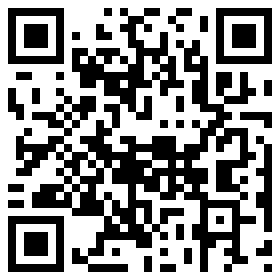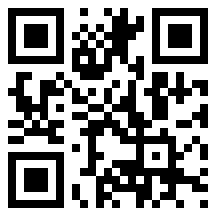an article by Vance Stevens
Higher Colleges of Technology, ADMC, CERT, UAE Naval College
This article reports on a 3-hour seminar which I was invited to give on March 13, 2012, at Erzincan University. The purpose of the seminar was to raise the consciousness of Aviation College students in Erzincan, Turkey about techniques for learning English and how to use online resources for self-study.
I began the seminar by explaining why I had called the seminar Erzincan CALLing. I explained that the title was a play on CALL, computer-assisted language learning, but that I was lately referring to this as SMALL, for social-media assisted language learning. Now that computers are coming to be normalized, the C in the acronym is no longer revelatory. However, I think that connecting people through social media is, and is how computers should be used for language learning. I advised the students that one good way to use computers to learn English is to put yourself in touch with others in a PLN, or personal learning network (sometimes called a PLE, personal learning environment). I showed the students one of the excellent PLE/PLN diagrams that can be found here: http://edtechpost.wikispaces.com/PLE+Diagrams
I showed an example of how my own PLN had worked that very morning, to alert me to a course that Mark Pegrum had just stated on advanced e-learning. At my request, he provided the URL: http://e-language.wikispaces.com/e-tools
The plan for the workshop was quite ambitious. The full plan can be seen at http://erzincancalling.pbworks.com/. The plan was only partially achieved, but what was accomplished was enough to set the group on a path for extended blended learning, should they choose to follow that path.
The workshop took place in a computer lab with around 50 computers, almost all of them taken by the 45 students and half a dozen teachers who attended the workshop. This is what it looked like:
In such an environment it's difficult to get to know one another and to engage participation from even a small percentage of those present. So I explained that we would be applying a tag to everything we produced during the three hours. The tag would be erzincancalling.
We began with Wallwisher at http://www.wallwisher.com/wall/erzincancalling. Wallwisher is one way to get feedback from a large group, without participants having to create an account somewhere and log in.
I asked the students to post on at Wallwisher their names and whether they were primarily creators or consumers of content online. I sorted the notes in my version of the wall so we could see the creators and consumers. As the position of all the notes gets scrambled any time the wall is refreshed, I captured my re-orderiing by making a screenshot of our Wallwisher using the Jing tool, available for free from http://www.techsmith.com/jing.html (another similar tool is available from http://www.screenr.com/).
These tools again enable us to communicate with large groups by making a screenshot or even a video of something happening on your computer (for example, I might say, "Here is how you do something ... I'll show you and if you need to see it again, I'm recording it, and you can replay it at this URL"). The recording is uploaded to Jing and then has a URL. The URL can be distributed to everyone in the group so they can all see what the teacher (or student) wants to show the group.
The above screen capture was uploaded to Jing, but its URL would be hard to communicate to the group. The URL for this one was “screencast.com slash t slash nR23u7qae”. It's hard for a teacher to SAY that, and if I write it down and display it, it's hard for students to copy it down exactly, with upper and lowercase characters intact. So here are three ways I can communicate URLs to the group.
- Since I am keeping a wiki, and for anyone who is on that page, I can write the URL in the wiki and invite the students to refresh the wiki, find the URL, and click on it.
- I can use http://tinyurl.com to turn a complicated URL into something that is easier for me to say aloud so that students can enter it into their browsers
- I can TAG the URL in Delicious and then students can find it by visiting the link where all our tagged items in Delicious will always appear. Since our tag is erzincancalling, we can find all URLs with that tag here: http://www.delicious.com/tag/erzincancalling.
If the teacher wants to show an item just tagged, it’s best to use the teacher’s Delicious account, http://www.delicious.com/vancestevens/erzincancalling, as shown in this Jing screen-capture:

In order to make use of our tag I tried to keep the participants active during the seminar. I asked them for example, to take photos with their cell phones, upload them to Flickr, and tag them erzincancalling. The idea was to retrieve these photos from Flickr by searching on our tag, and then display them again on that tag in http://taggalaxy.de. This didn’t work well in the time allowed, but some of the photos are available in my photostream: http://www.flickr.com/photos/vancestevens/.
I also tried to get the group tweeting on our hash tag. During the workshop, no one actually did this apart from me and two teachers from Hong Kong and Uzbekistan who tweeted using#erzincancalling. This screenshot shows the result:
If there is a lot of tagging activity during a workshop, then we can usually aggregate these tagged items in various spaces as explained here: http://erzincancalling.pbworks.com/aggregation. As it turned out, we were only able to attract our tweets to our Spezify page http://spezify.com/#/erzincancalling.
At this point in the workshop, one student asked me a good question, what did all this have to do with learning English? So I decided to elicit from the students web sites that they knew of that would help them with that. Again, in groups of so many students, it is difficult to elicit responses quickly and effectively from each person, so this time I used an Etherpad clone, a URL where all students could go and write at the same time their answer to our poll question (What is your favorite website for learning English?) at the same time.
- There's more about the Etherpad clones here:
Lowensohn, J. (2010). EtherPad dies this week: Here are six great clones. CNET News. Retrieved on March 6, 2012 from http://news.cnet.com/8301-27076_3-20004686-248.html. - We found that Synch.in didn't work well (limited to only 8 participants)
- We moved to http://titanpad.com/WFs4aBbomd and got the results we wanted
At the break someone inadvertently (or for fun :-) deleted all the contents of the TitanPad, but one of the great things about this program is that you can get everything back by using the time slider. While the students were on break I restored what the students had contributed and copied the good contents into a Google Doc, and when the students returned they spent the next 15 minutes adding themselves to the Google Doc on my computer. And then it suddenly became lunchtime and the students all left after thanking me very much for the presentation :-)


And that is where most presentations like this end. When all the students leave, all is soon forgotten.
But NOT with this one ...
The most powerful takeaway from this presentation is that the presentation does not need to end. Now the learning can begin!
The students asked me to show them something that would help them learn English. I did. We created a Google Doc. We shared it. We gave it a TinyURL http://tinyurl.com/erzincancalling. It's still there. All the students can read it and write on it. All their English teachers were added as contributing editors as well.
This report was put in blog at http://erzincancalling.posterous.com. The students have been asked via the Google Doc and via their teachers to subscribe to that blog. If they do that I can promote them to authors. It's possible that they might comment on this post, or make posts of their own. If they do that, then email is sent to all subscribers of the blog. When subscribers reply to the email, their comments appear automatically on the blog and email is again sent to all subscribers that comments were made, and they can reply by email if they wish. Students can also post to the blog by email, and any attachment they include will be embedded in the blog.
This is one of the things I wanted to show them in the workshop, but even though time ran out, there is no reason in a connected world that time has to run out on learning :-)
Feedback
Vance posted this as a follow-up comment
Hi everyone, I don't know if there will be any follow up from the seeds of learning we have planted here, but if there is, I am ready at any time to help you follow up on the continuation of your learning journey.
There are many ways to do this. For example, I meet with other teachers and any interested students to discuss education each week. We meet usually between the hours of 1200 to 1500 GMT each Sunday, and if you wish to join us, see where we'll be next at http://learning2gether.pbworks.com
Meanwhile, the article I posted here has been published in the online journal TESL-EJ. You can find the article here: http://www.tesl-ej.org/wordpress/issues/volume15/ej60/ej60int/
All the best and thanks for an enjoyable visit to Erzincan.









 Tag in your DEL.ICIO.US account
Tag in your DEL.ICIO.US account











No comments:
Post a Comment